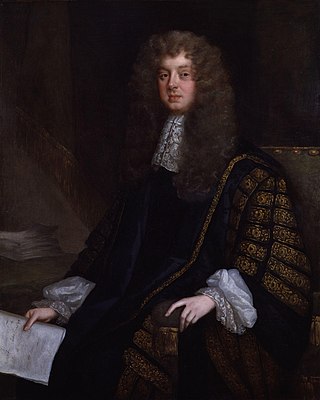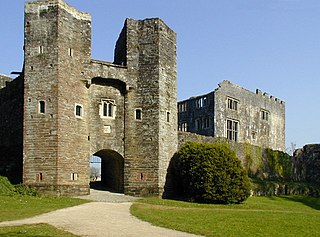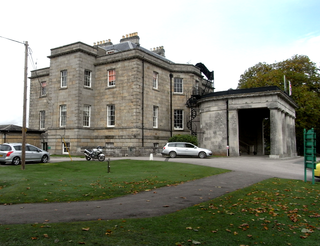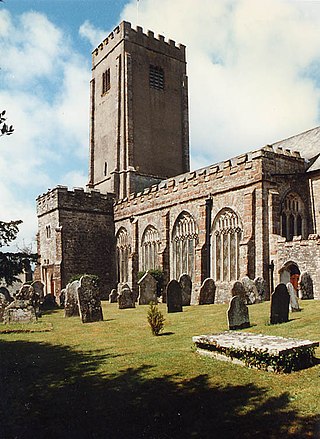
Duke of Somerset, from the county of Somerset, is a title that has been created five times in the peerage of England. It is particularly associated with two families: the Beauforts, who held the title from the creation of 1448, and the Seymours, from the creation of 1547, in whose name the title is still held. The present dukedom is unique, in that the first holder of the title created it for himself in his capacity of Lord Protector of the Kingdom of England, using a power granted in the will of his nephew King Edward VI.

Charles Seymour, 6th Duke of Somerset, known by the epithet "The Proud Duke", was an English aristocrat and courtier. He rebuilt Petworth House in Sussex, the ancient Percy seat inherited from his wife, in the palatial form which survives today. According to the Encyclopædia Britannica Eleventh Edition, he was a remarkably handsome man, and inordinately fond of taking a conspicuous part in court ceremonial; his vanity, which earned him the sobriquet of "the proud duke", was a byword among his contemporaries and was the subject of numerous anecdotes; Macaulay described him as "a man in whom the pride of birth and rank amounted almost to a disease".

John Moore (1646–1714) was Bishop of Norwich (1691–1707) and Bishop of Ely (1707–1714) and was a famous bibliophile whose vast collection of books forms the surviving "Royal Library" within Cambridge University Library.

Edward AdolphusSt. Maur, 12th Duke of Somerset,, styled Lord Seymour until 1855, was a British Whig aristocrat and politician, who served in various cabinet positions in the mid-19th century, including that of First Lord of the Admiralty.

John Michael Edward Seymour, 19th Duke of Somerset,, styled Lord Seymour between 1954 and 1984, is a British aristocratic landowner in Wiltshire and Devon, and a member of the House of Lords.
Archibald Algernon Henry St. Maur, formerly Seymour, 13th Duke of Somerset, etc. was the son of Edward St. Maur, 11th Duke of Somerset and Lady Charlotte Douglas-Hamilton. He was also a baronet. His motto, Foy Pour Devoir, "Faith for Duty", has been adopted by HMS Somerset (IV) by permission.

Edward Seymour, 8th Duke of Somerset was an English peer and landowner.

Seymour, Semel or St. Maur, is the name of an English family in which several titles of nobility have from time to time been created, and of which the Duke of Somerset is the head.

Berry Pomeroy is a village and civil parish in the South Hams district of Devon, England, 2 miles (3 km) east of the town of Totnes. The parish is surrounded clockwise from the north by the parishes of Ipplepen, Marldon, Torbay, Stoke Gabriel, Ashprington, Totnes, and Littlehempston. In 2001 its population was 973, down from 1193 in 1901. The main road access is via the A385 road between Paignton and Totnes that runs through the parish, south of the village.

Sir Edward Seymour, of Berry Pomeroy, 4th Baronet, MP was a British nobleman, and a Royalist and Tory politician.

There have been three Baronetcies created for persons with the surname Seymour, two in the Baronetage of England and one in the Baronetage of the United Kingdom. One creation is extant as of 2008.

Sir Edward Seymour, 1st Baronet of Berry Pomeroy, Devon, was Member of Parliament for Devon, twice High Sheriff of Devon and an Army Colonel.
Sir Edward Seymour, of Berry Pomeroy, 5th Baronet of Bradley House, Maiden Bradley, Wiltshire was an English landowner and Tory politician.

Sir Edward Seymour, 3rd Baronet of Berry Pomeroy Castle was an English politician who sat in the House of Commons at various times between 1640 and 1688. He fought for the Royalist cause in the English Civil War.

Sir Edward Seymour, 2nd Baronet was an English landowner and politician who sat in the House of Commons between 1601 and 1625. He was an ambassador to Denmark. During the English Civil War, he supported the Royalist cause.

Lord Edward Seymour, knight, of Berry Pomeroy, Devon, was Sheriff of Devon in 1583. He was knighted by his father the Duke of Somerset on the battlefield of Pinkie on 10 September 1547.

Bradley House, or Maiden Bradley House, is a country house in the village of Maiden Bradley, Wiltshire, England, between the great country estates of Stourhead and Longleat. It is the family home of the Duke of Somerset, having been in the Seymour family for over 300 years. The house is an 1820s remodelling of the west wing of a much larger house which had been completed in the early 18th century.
The feudal barony of Berry Pomeroy was one of eight feudal baronies in Devonshire, England, which existed during the mediaeval era. It had its caput at the manor of Berry Pomeroy, 20 miles south of the City of Exeter and 2 miles east of the town of Totnes, where was situated Totnes Castle, the caput of the feudal barony of Totnes. The exact location of the 11th-century baron's residence is unclear; perhaps it was next to the parish church on the site of the former rectory known as Berry House, as it is now believed that the nearby ruined Berry Pomeroy Castle was not built until the 15th century.

Stover is a historic estate in the parish of Teigngrace, about half way between the towns of Newton Abbot and Bovey Tracey in South Devon, England. It was bought by James Templer (1722–1782) in 1765 and passed through three generations of that family before being bought by Edward St Maur, 11th Duke of Somerset in 1829.

St Mary's Church of Berry Pomeroy is an Anglican parish church in Berry Pomeroy, with a full length, forty-two foot wide, rood screen which has been described as one of the most perfect in Devon. It is listed on the Heritage at Risk Register.



















